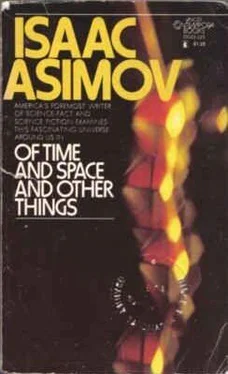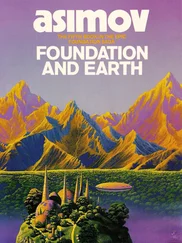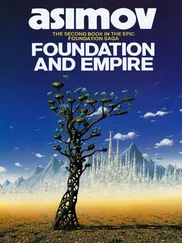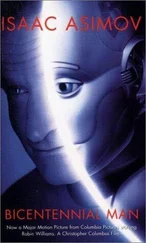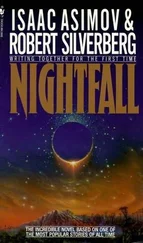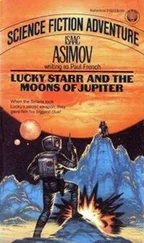Isaac Asimov - Of Time and Space and Other Things
Здесь есть возможность читать онлайн «Isaac Asimov - Of Time and Space and Other Things» весь текст электронной книги совершенно бесплатно (целиком полную версию без сокращений). В некоторых случаях можно слушать аудио, скачать через торрент в формате fb2 и присутствует краткое содержание. Год выпуска: 1972, ISBN: 1972, Издательство: Lancer Books, Жанр: Прочая научная литература, на английском языке. Описание произведения, (предисловие) а так же отзывы посетителей доступны на портале библиотеки ЛибКат.
- Название:Of Time and Space and Other Things
- Автор:
- Издательство:Lancer Books
- Жанр:
- Год:1972
- ISBN:ISBN: 0-447-33023-3
- Рейтинг книги:4 / 5. Голосов: 1
-
Избранное:Добавить в избранное
- Отзывы:
-
Ваша оценка:
- 80
- 1
- 2
- 3
- 4
- 5
Of Time and Space and Other Things: краткое содержание, описание и аннотация
Предлагаем к чтению аннотацию, описание, краткое содержание или предисловие (зависит от того, что написал сам автор книги «Of Time and Space and Other Things»). Если вы не нашли необходимую информацию о книге — напишите в комментариях, мы постараемся отыскать её.
Of Time and Space and Other Things — читать онлайн бесплатно полную книгу (весь текст) целиком
Ниже представлен текст книги, разбитый по страницам. Система сохранения места последней прочитанной страницы, позволяет с удобством читать онлайн бесплатно книгу «Of Time and Space and Other Things», без необходимости каждый раз заново искать на чём Вы остановились. Поставьте закладку, и сможете в любой момент перейти на страницу, на которой закончили чтение.
Интервал:
Закладка:
This holds for our shells. The average star in a shell 2000 light-years from us would be only 1/4 as bright in appearance as the average star in a shell only 1000 light years from us. (Assumption 3 tells us, of course, that the intrinsic brightness of the average star in both shells is the same, so that distance is the only factor we need consider.)
Again, the average star in a shell 3000 light-years from us would be only % as bright in appearance as the average star in the 10004ight-year shell, and so on.
But as you work your way outward, each succeeding shell is more voluminous than the one before. Since each shell is thin enough to be considered, without appreciable error, to be the surface of the sphere made up of all the shells within, we can see that the volume of the shells in creases as the surface of the spheres would-that is, as the square of the radius. The 2000-light-year shell would have four times the volume of the 1000-light-year shell.
The 3000-light-year shell would have nine times the volume of the 1000-light-year shell, and so on.
If we consider the stars to be evenly distributed through space (Assumption 2), then the number of stars in any given shell is proportional to the volume of the shell. If the 2000-light-year shell is four times as voluminous as the 1000-light-year shell, it contains four times as many stars.
If the 3000-light-year shell is nine times as voluminous as the 1000-light-year shell, it contains nine times as many stars, and so on.
Well, then, if the 2000-light-year shell contains four ,times as many stars as the IOOG-light-year shell, and if each star in the former is % as bright (on the average) as each star of the latter, then the total light delivered by the 20GO-light-year shell is 4 times Y4 that of the 1000 fight-year shell. In other words, the 2000-light-year shell delivers just as much total light as the 1000-light-year shell. The total brightness of the 3000-light-year shell is 9 times % that of the 1000-light-year shell, and the bright ness of the two shells is equal again.
In summary, if we divide the universe into successive shells, each shell delivers as much light, in toto, as do any of the others. And if the universe is infinite in extent (As sumption 1) and therefore consists of an finate number of shells, the stars of the universe, however dim they may be individually, ought to deliver an infinite amount of light to the Earth.
The one catch, of course, is that the nearer stars may block the light of the more distant stars.
To take this into account, let's look at the problem in another way. In no matter which direction one looks, the eye will eventually encounter a star, if it is true they are infinite in number and evenly distributed in space (As sumption 2). The star may be individually invisible, but it will contribute its bit of light and will be immediately adjoined in all directions by other bits of light.
The night sky would then not be black at all but would be I an absolutely solid smear of starlight. So would the day sky be an absolutely solid smear of starlight, with the Sun itself invisible against the luminous background.
Such a sky would be roughly as bright as 150,000 suns like ours, and do you question that under those conditions life on Earth would be impossible?
However, the sky is not as bright as 150,000 suns. The night sky is black. Somewhere in the Olbers' paradox there is some mitigating circumstance or some logical error..
Olbers himself thought he found it. He suggested that space was not truly transparent; that it contained clouds of dust and gas which absorbed most of the starlight, allowing only an insignificant fraction to reach the Earth.
That sounds good, but it is no good at all. There are indeed dust clouds in space but if they absorbed all the starlight that fell upon them (by the reasoning of Olbers' paradox) then their temperature would go up until they grew hot enough to be luminous. They would, eventually, emit as much light as they absorb and the Earth sky would still be star-bright over all its extent.
But if the logic of an argument is faultless and the con clusion is still wrong, we must investigate the assumptions.
What about Assumption 2, for instance? Are the stars in deed infinite in number and evenly spread throughout the universe?
Even in Olbers' time there seemed reason to believe this assumption to be false. The German-English astronomer William Herschel made counts of stars of different bright ness. He assumed that, on the average, the dimmer stars were more distant than the bright ones (which follows from Assumption 3) and found that the density of the stars in space fell off with distance.
From the rate of decrease in density in different direc tions, Herschel decided that the stars made up a lens shaped figure. The long diameter, he decided, was 150 times the distance from the Sun to Arcturus (or 6000 light-years, we would now say), and the whole conglomer ation would consist of 100,000,000 stars.
This seemed to dispose of Olbers' paradox. If the lens shaped conglomerate (now called the Galaxy) truly con tained all the stars in existence, then Assumption 2 breaks down. Even if we imagined space to be infinite in extent outside the Galaxy (Assumption 1), it would contain no stars and would contribute no illumination. Consequently, there would be only a finite number of star-containing shells and only a finite (and not very large) amount of illumination would be received on Earth. That would be why the night sky is black.
The estimated size of the Galaxy has been increased since Herschel's day. It is now believed to be 100,000 light-years in diameter, not 6000; and to contain 150,000, 000,000 stars, not 100,000,000. This change, however, is not crucial; it still leaves the night sky black.
In the twentieth century Olbers' paradox came back to life, for it came to be appreciated that there were indeed stars outside the Galaxy.
The foggy patch in Andromeda had been felt through out the nineteenth century to be a luminous mist that formed part of our own Galaxy. However, other such patches of mist (the Orion Nebula, for instance) contained stars that lit up the mist. The Andromeda patch, on the other hand, seemed to contain no stars but to glow of itself.
Some astronomers began to suspect the truth, but it wasn't definitely established until 1924, when the Amer ican astronomer Edwin Powell Hubble turt'ied the 100 inch telescope on the glowing mist and was able to make out separate stars in its outskirts. These stars were in dividually so dim that it became clear at once that the patch must be hundreds of thousands of light-years away from us and far outside the Galaxy. Furthermore, to be seen, as it was, at that distance, it must rival in size our entire Galaxy and be another galaxy in its own right.
And so it is. It is now believed to be over 2,000,000 light-years from us and to contain at least 200,000,000, 000 stars. Still other galaxies were discovered at vastly greater distances. Indeed, we now suspect that within the observable universe there are at least 100,000,000,000 galaxies, and the distance of some of them has been esti mated as high as 6,000,000,000 light-years.
Let us take Olbers' three assumptions then and substi tute the word "galaxies" for "stars" and see how they sound.
Assumption 1, that the universe is infinite, sounds good.
At least there is no sign of an end even out to distances of billions of light-years.
Assumption 2, that galaxies (not stars) are infinite in number and evenly spread throughout the universe, sounds good, too. At least they are evenly distributed for as far out as we can see, and we can see pretty far.
Assumption 3, that galaxies (not stars) are of uniform average brightness throughout space, is harder to handle.
However, we have no reason to suspect,-6at distant galaxies are consistently larger or smaller than nearby ones, and if the galaxies come to some uniform average size and star-content, then it certainly seems reasonable to suppose they are uniformly bright as well.
Читать дальшеИнтервал:
Закладка:
Похожие книги на «Of Time and Space and Other Things»
Представляем Вашему вниманию похожие книги на «Of Time and Space and Other Things» списком для выбора. Мы отобрали схожую по названию и смыслу литературу в надежде предоставить читателям больше вариантов отыскать новые, интересные, ещё непрочитанные произведения.
Обсуждение, отзывы о книге «Of Time and Space and Other Things» и просто собственные мнения читателей. Оставьте ваши комментарии, напишите, что Вы думаете о произведении, его смысле или главных героях. Укажите что конкретно понравилось, а что нет, и почему Вы так считаете.
